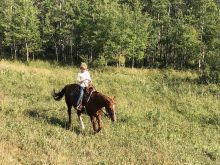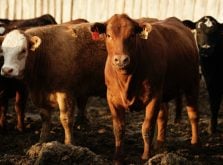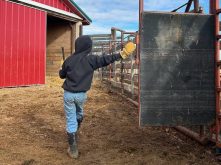I think I’ve recently alarmed a few people who know me, as I’ve taken a much greater interest in watching hockey on TV.
It surprises me too. I moved to Winnipeg not long before the previous iteration of the Jets bolted for Arizona, which left me even more soured on most pro sports. (After the anguish the previous franchise created here, the irony of that team now having to play its home games in a half-sized rink in Tempe is ever so rich.)
Despite their recent attendance woes, the former Atlanta Thrashers seem to be on a much more solid footing here in this town — and when my friends and acquaintances here who know far more than I do about hockey are happy, I’m happy for them, which makes the games fun to watch. I never did play hockey and there’s a lot I still don’t understand about it — but at least now, in middle age, I get what the fuss is about.
Read Also

Gentle treatments for pain in the neck
Heading toward year-end, people unknowingly tense up against the cold and busyness, causing neck pain that can often be treated with appropriate support and gentle mobility, athletic therapist Kathlyn Hossack says.
So when Saskatchewan’s SJHL — the province’s 12-team junior ‘A’ league — announced a new program with Canterra Seeds to recognize that league’s home-grown — and farm-raised — talent, I thought it was a worthy endeavour.
The company came on board as sponsor of the “Golden Sheaf” program, which the league conceived as a way to celebrate its Saskatchewan-born players — it’s a coveted league to be in, so I was intrigued but not surprised to see how small a percentage that is — and to highlight the stories of those who came from Saskatchewan’s farms.
“Just look at one of the many Saskatchewan players that have made it to the NHL over the years and more often than not they have a background in agriculture,” league commissioner Kyle McIntyre said in announcing the program.
“Ask any hockey coach what sets the top players apart from the rest of the pack and you can bet ‘work ethic’ will be the No. 1 answer,” Canterra’s CEO Brent Derkatch said in the same release, adding, “Ask any farm kid what they learned growing up on the farm was and you can bet ‘work ethic’ will be the No. 1 answer.”
The first featured Golden Sheaf player on the SJHL website: Connor Miller, age 17, a Humboldt Broncos forward from a family farm at Lipton, northeast of Regina, who spoke of his own plans to return to agriculture when his playing days are done.
Having spent a bit of time reading the work of Dr. Val Farmer, a retired Grainews columnist who wrote often about smaller U.S. communities’ obsessions with high school football and the effects on the young people who played it, it seems to me the Golden Sheaf program is a good grounding exercise, focusing on players’ strengths as people.
“We were actively finding a way to bring our league slogan of ‘Stay Here, Play Here’ to life,” an SJHL spokesperson said via email. Or, as McIntyre puts it, the program is an extension of “a commitment to ensure that Saskatchewan players are provided every opportunity to play, develop and move forward in their hockey ambitions right here in Saskatchewan.”
That can be a tall order for players whose focus may be on the next level, and the next level after that, and that other level I’ve been watching on TV every few nights. And it definitely takes a farmer’s work ethic — along with strenuous commitments to training and development and the fickle blessings of luck and timing, to reach and then seize that proverbial brass ring.
Another good read on that broader subject is Don’t Call Me Goon by Greg Oliver and Richard Kamchen, which recounts wild stories from the careers of the NHL’s fighters and enforcers, along with the physical and mental tolls many paid in their post-hockey lives. I get that some sports will always involve people colliding at full speed for the entertainment of couch potatoes like me, but the last thing I want to see is young people tank their future well-being to keep my entertainment train going.
Which is why I’ll be interested to see this Golden Sheaf program continue, not only providing us all with an early look at these Saskatchewan farm-grown players, but showing us — and each other — what made them and what they hope to do for themselves when the games are done.
On that note, any farmers out there who grew up in agriculture, then played at these advanced levels of hockey, are welcome to drop me a line, if they’d like to share more about how the farm made the player — and, in turn, how the player made the farmer.
And to be clear to SJHL fans and others from the mother province: comment from Saskatchewan Roughriders fans is always welcome at this desk. On the matter of what makes us all happy, sometimes my Winnipeg friends and I must agree to disagree.
















